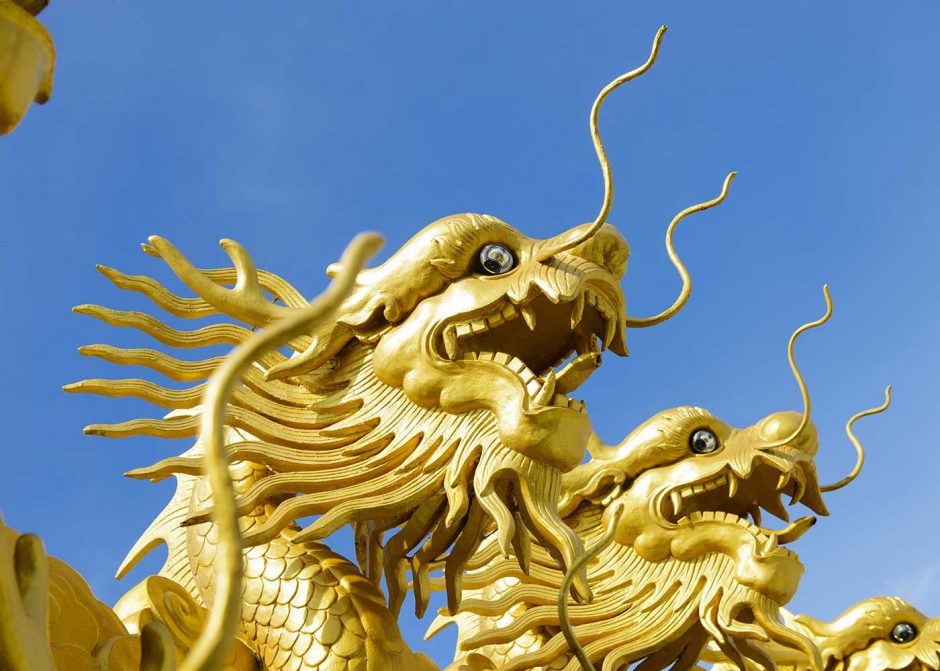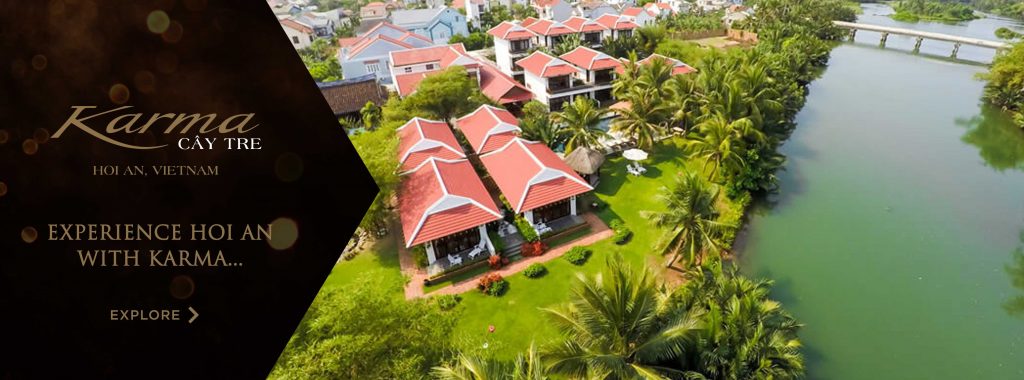The Dragon Tale
In Hoi An Vietnam, also known as the land of the ascending dragon due to its unique geological shape, dragons are no fairy tale. According to an ancient creation myth, the Vietnamese were descended from such a fantastical creature, albeit with a little help from a friend, who, in this particular cosmic act of procreation, happened to be an obliging goddess (hence the origin of the Vietnamese proverb “Con Rồng, cháu Tiên,” or, “Children of Dragon, Grandchildren of Gods”).
The dragon symbolizes yang; but it also epitomizes power, intellect, longevity and nobility. It reflects the prosperity of the nation; but it also brings about rain, so vital to agriculture.
This most impressive of all creatures in Asian mythology has inevitably undergone as many transformations as Vietnam has undergone dynasties. However, the first in a long and illustrious line of them, Giao Long, was part crocodile (due to the fact that the Vietnamese lived near rivers, hence their veneration of the reptile), with elements of serpent, cat, rat and fowl thrown in for good (and symbolic) measure.
Befittingly, this sacred creature’s presence can be felt all over Vietnam, and its commercial and cultural center, the elegant, historic Hoi An, virtually teems with them. You simply have to know where to look. Admittedly, doing so could prove daunting in a town as distractingly exquisite as Hoi An, whose legendary beauty, seductive riverside setting and grand architecture in a blend of foreign and local influence caused it to be declared a World Heritage Site by UNESCO in 1999. But luckily, there are many places in its elegant, atmospheric old town, a well-preserved example of a major Asian trading center from the 16th to the 18th century, where you can meet up with this extraordinary mythical flight-of-fancy beast, so integral to Vietnamese culture. Here are but a few:
The Dragon Trail
Diep Dong Nguyen
Diep Dong Nguyen, a historic building located at 82 Nguyen Thai Hoc Street, considered the first private museum in central Vietnam, is home to the exquisite Chinese dragon-carp, a symbol of strength, with carvings throughout the house, among other fascinating details of daily life in Hoi An centuries ago. Interestingly, in this instance, the carp symbolizes prosperity, success and scholarly knowledge, and its metamorphosis into a dragon serves as a reminder that nothing in life comes without struggle. In fact, to become a dragon and attain immortality, a fish must pass through three gates, just as a scholar must pass three exams (trials), to become a mandarin.
The Japanese Covered Bridge
The Japanese Covered Bridge or Cau Chua Pagoda (Cau Nhat Ban) is perhaps the most famous tourist attraction in Hoi An, and entirely dragon-inspired. Connecting Tran Phu Street with Thi Minh Khai Street, it was constructed in the 1590s to create a link between the Japanese and Chinese quarters of the town. Though its sculptures are a dog and a monkey, animals sacred in Japanese culture, it is believed that the bridge served a religious purpose; namely, to appease a world-spanning mamazu dragon-monster, whose head was located in India and its tail in Japan!
Phuc Kien (or Fukian) Assembly Hall
Serving the largest ethnic group in Hoi An, the Phuc Kien Assembly Hall was built in 1690, with its Jinshang golden mountain temple, sacred to Thien Hau, the goddess of the sea and the protector of sailors. Among the many animal symbols that figure so prominently in its design and architecture is that of the dragon, representing power to the Chinese, evident in the building’s exquisite mosaic fountain. A formidable dragon, whose head is crafted with enamel porcelain tiles and other colorful pieces, coils iconically around the lake, with various dragon and carp figurines playfully spurting water at one another. In a mural at the back of the hall, a dragon depicted frolicking with a unicorn creates the impression that both mythological creatures are dancing. There is even a dragon on the rooftop! Though relegated to mythology, the dragon remains a living, breathing presence in contemporary Vietnamese society, as reflected both in Hoi An’s numerous palaces, temples, pagodas, homes and tombs, and in the very proverbs of the Vietnamese people. To list but a few:
- “Rồng gặp mây”: “Dragon meets clouds” – implies favorable conditions.
- “Đầu rồng đuôi tôm”: “Dragon’s head, shrimp’s tail” – means good in the beginning and bad at the end; something which starts well but ends badly.
- “Rồng bay, phượng múa”: “Dragon flight, phoenix dance” – is used to praise the calligraphy of someone who writes Chinese ideograms well.
- “Rồng đến nhà tôm”: “Dragon visits shrimp’s house” – an expression used by a host to or about his guest: the host portrays himself as a humble shrimp and his guest as a noble dragon.
- “Ăn như rồng cuốn, nói như rồng leo, làm như mèo mửa”: “Eating as dragon scrolls, talking as dragon climbs, working as cat vomits” – a criticism of someone who eats too much and talks a lot, but is lazy.
So important is the dragon in modern-day Vietnam, that according to one cultural researcher, Dang Van Ban, “The dragon image reflects people’s desire to free themselves from restrictions and limitations. It [the dragon] can fly in the sky, hide in the clouds, swim, walk and crawl. The dragon symbolizes human aspiration for strength and freedom to live a better life.”
If for no other reason than that, one should pay homage to this most fantastical and majestic of beasts, following with hushed reverence in its trail, so ancient yet so modern, so unbelievable yet so real.


Recent Comments